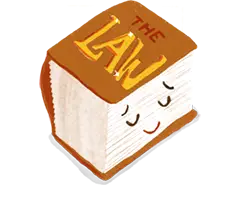Home safety and repairs
This page contains different parts of laws about Home safety and repairs, within the topic of Housing and property.

Important laws about Home safety and repairs
Telecommunications Act 2001
A special document can be used as proof in disputes about equipment or lines on someone's land.
127: Evidentiary presumption
Telecommunications Act 2001
What happens if you don't fix a tree problem and the network operator goes to the District Court
129: Application to District Court
Telecommunications Act 2001
Court can order you to trim or remove plants blocking phone or internet lines
130: Court order
Telecommunications Act 2001
Paying for tree removal or trimming near phone and internet lines
131: Costs of removal or trimming of trees
Telecommunications Act 2001
Getting paid if a network operator damages your property
154: Compensation
Telecommunications Act 2001
Paying for work to fix or install telecommunications equipment
147B: Cost of work required under section 147A
Telecommunications Act 2001
How telecom companies can access your property to install fibre optic cables
155B: Overview
Telecommunications Act 2001
Before installing fibre, workers must give you 5 days' notice and tell you their plans.
155K: Particular preconditions before exercising statutory right of access to carry out category 1 installation
Telecommunications Act 2001
Before letting someone into your property to install fibre, they must give you notice and a plan.
155L: Particular preconditions before exercising statutory right of access to carry out category 2 installation
Telecommunications Act 2001
Companies must notify and show you their plans before installing certain equipment on your property
155M: Requirements in respect of preliminary notice and design plan for category 2 installations
Telecommunications Act 2001
Getting paid back for damage to your property
155ZZC: Compensation for damage, etc
Telecommunications Act 2001
Objecting to telecoms work on your property: when and why you can say no
155N: Grounds and time for objecting to exercise of statutory right of access to carry out category 2 installation
More laws about Home safety and repairs
About this project
What is this project?
How do we do this?
Why is the law written like it is?
Should we use AI for this?
Is this information the actual law?
You can talk to Community Law or Citizen's Advice Bureau about your rights.
Remember that AI can make mistakes, and just reading the law isn't enough to understand how it could be used in court.




